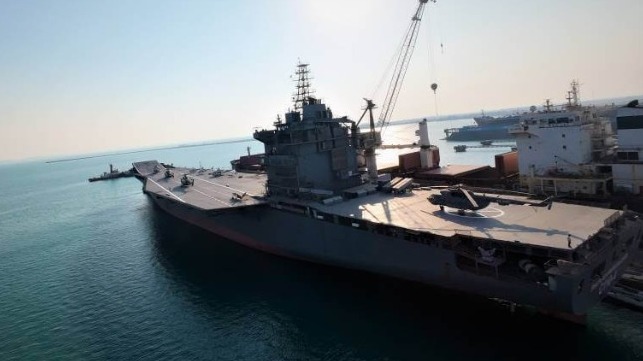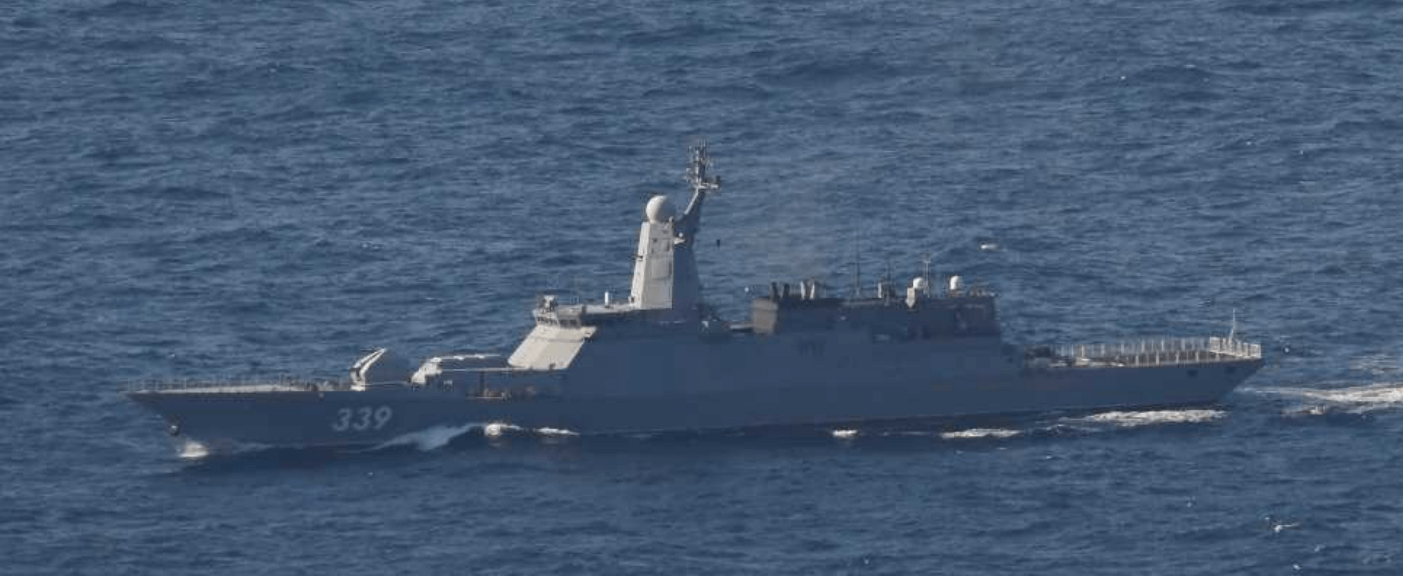Iran's "Drone Carrier" May Join Exercise With Russia and China

The annual Iranian-Chinese and Russian naval codenamed Exercise Maritime Security Belt normally takes place in mid-March, in a pattern established over a number of years.
Maritime Security Belt 2025 is likely to feature the outgoing Chinese Navy Group, which is nearing the completion of its six month forward deployment to the PLA Navy’s Project 141 Overseas Support Base at Doraleh, in Djibouti. The departing 46th Naval Escort Group consists of the Type 052D destroyer Jiaozuo (D163), Type-054A frigate Xuchang (F536) and the Type 903A logistics vessel Honghu (K963).
The Maritime Security Belt 2025 exercise will be the first of a number that they will carry out with cooperating navies on their way back to their homeport of Zhanjiang in Guangdong, headquarters of the PLA Navy’s South Sea Fleet.
Photos: Chinese PLA’s new support base in #Djibouti officially launched #PLA90 pic.twitter.com/DIfxqWPcAB
— CGTN (@CGTNOfficial) August 1, 2017
The Russian participants are likely to be Steregushchiy Class Project 20380 missile corvettes Hero of the Russian Federation Aldar Tsydenzhapov (F339) and Rezkiy (F343) and the oiler Pechenga (IMO 7710977). The Press Office of the Pacific Fleet via Izvestia reported their departure from Vladivostok on February 3 for "tasks in the Asia Pacific Region." While transiting the Sea of Japan the flotilla conducted air defence training to counter drones and drills ‘to repel attacks of uncrewed boats’, which could be useful if any of Iran’s Houthi allies operating in the Red Sea and Gulf of Aden mistakes the Russian ships for unfriendly vessels.
The Pechenga is sailing without its AIS automatic identification system switched on, but the flotilla en route is known to have arrived off Bali on February 15 to take part with the Indonesian Navy in Exercise Komodo-2025.

Hero of the Russian Federation Aldar Tsydenzhapov (F339) (Japan Ministry of Defense, 2021)
The Iranian naval representation in the exercise, from the both the IRGC (Nedsa) and regular Navy (Nedaja) will become apparent closer to the time and will be dependent on ship serviceability, always an issue in the aging Iranian fleet. However, the exercise is likely to feature drone and missile firings, which is the Iranian preoccupation at present.
It may also present the Nedsa an opportunity to demonstrate that their new drone carrier Shahid Bagheri (C110-4), last seen in its normal anchorage off Bandar Abbas on a cloudless February 1, is operationally viable. Some press reports greeted the Nedsa’s promotional video of a small jet-powered one-way attack drone, akin to a model aircraft, taking off from the Shahid Bagheri as representing a radical shift in the balance of power at sea which would concern Israel.
Whilst one-way drone launches may be viable, the ship can launch missiles, helicopters and fast attack boats, as any frigate could. But there is no indication yet that a fixed-wing air vehicle could recover to the Shahid Bagheri’s 180-meter flight deck, overcoming the pitch and roll characteristics of the off-center flight deck and air turbulence created by the ship’s towering sterncastle.
Except in conditions of stable peacetime, the survivability of this 20-year-old converted tanker in wartime, or even in times of increased tension, would probably be measured in hours rather than days. Notwithstanding its sturdy Korean construction, a ship surveyor would probably have consigned the Perarin to the scrap heap rather than allow it to be converted into the Shahid Bagheri, pride of the Nedsa fleet.
Top image: Converted boxship Shahid Bagheri, Iran's "drone carrier" (Sepah News / CC BY 4.0)
The opinions expressed herein are the author's and not necessarily those of The Maritime Executive.
